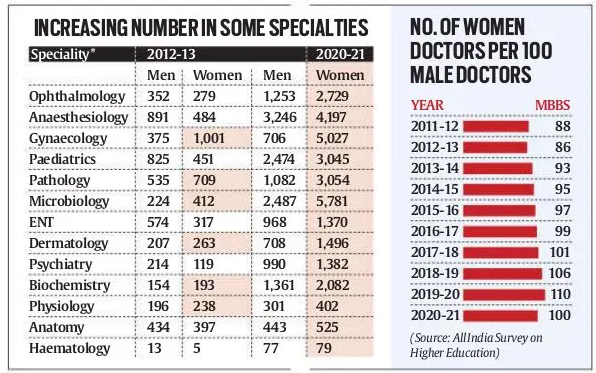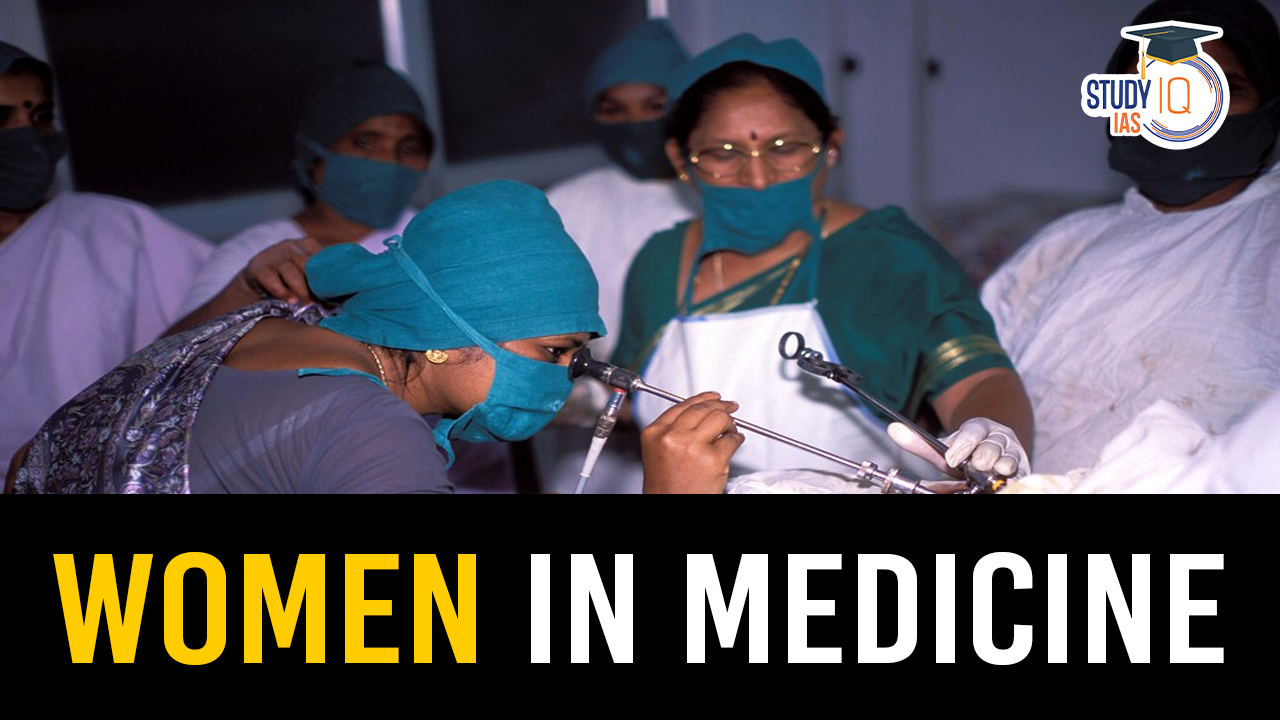Table of Contents
Enrollment of Women in Medicine
- In 2020-21, for every 100 men, there were 100 women enrolled in medical colleges, compared to 88 per 100 men in 2011-12 and 110 per 100 men in 2019-20 (slightly affected by the pandemic).
- Women are increasingly entering previously male-dominated specialties like cardiology, oncology, and neurology:
- Cardiology: From 7 women vs. 312 men in 2012-13 to 78 women vs. 220 men in 2020-21.
- Oncology: From 29 women vs. 95 men in 2012-13 to 116 women vs. 123 men in 2020-21.
- Neurology: From 9 women vs. 118 men in 2012-13 to 78 women vs. 173 men in 2020-21.

Societal Shifts and Aspirations
- This rise in women pursuing medicine reflects a broader societal shift.
- Women are increasingly resisting societal pressures around marriage and motherhood and the expectation to prioritise care work at home, choosing instead to focus on their professional aspirations.
Challenges and Systemic Barriers
Despite these positive trends, systemic barriers remain:
- Sexism persists in both classrooms and workplaces.
- There is a lack of basic facilities like separate changing rooms and washrooms for women.
- Inadequate security and lack of protections against various forms of violence are major concerns, as highlighted by incidents like the R G Kar rape and murder of a female doctor in Kolkata.
The system remains largely designed through a masculine lens, which fails to address the specific needs of female professionals.
The Need for Change
As projections indicate that almost half of Indian surgeons in the coming decade will be women, there is an urgent need to reform the medical system:
- More women in leadership roles could drive this change.
- Addressing security concerns, not by avoiding late-night shifts, but by creating environments where women feel safe and supported, is key.


 Places in News for UPSC 2025 for Prelims...
Places in News for UPSC 2025 for Prelims...
 New Phase of Operation Chakra to Combat ...
New Phase of Operation Chakra to Combat ...
 Soyuz Aircraft: History, Design and Sign...
Soyuz Aircraft: History, Design and Sign...





















